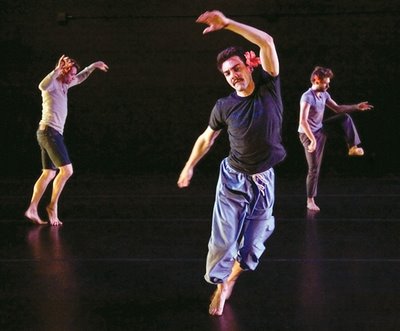
Appel à contributions
Meanings and Makings of Queer Dance
Avant le 15 septembre - University of Michigan
Congress on Research in Dance (CORD) Special Topics Conference 2012
University of Michigan, Ann Arbor
February 16-18, 2012
What is queer dance ? Given the multiple, contested, and historically contingent meanings of the word “queer,” the term seems useful for opening an inquiry about dance, just as dance’s emphasis on embodiment has much to contribute to queer studies. If dance is a way to think through social relationships, what images, bodily techniques, and spectatorial and embodied pleasures might dance offer to queer communities, scholars, and artists ? How have lesbian, gay, and transgender histories intersected with dance in the theatre, on the club floor, and in the streets ? When—and how—do “queer” and “dance” signal (or obscure) other vectors of identity, such as race, class, gender, ability, and others ? The meanings of “queer” have shifted and proliferated over time ; competing and overlapping ideas about queer pleasure, desire, and politics may all manifest themselves within dance. Queer dance might be defined by an artist’s identity or preoccupations ; by a work’s critique of normative values ; or by a spectator’s or performer’s queer pleasures and desires. Queer spaces, or those haunted by a queer past, might also prompt a consideration of how dance engages history, representation, and community. Dance and sexuality can also be thought through together as social, physical, and historically situated practices that are (often at once) liberatory, risky, entertaining, and always in process, often inviting inquiries about affect and public feelings.
This conference seeks to bring together queer studies and dance studies to consider the questions, methods, practices, and politics that preoccupy both fields. We encourage submissions from both artists and scholars, who study, make, and/or participate in dance in and for a variety of venues—from the concert stage to the social club dance floor to the video screen. Submissions exploring the limits or problems of the term “queer” are also welcome. While dance will be at the center of the conference, we hope submissions will take up dance from a range of disciplines and practices, including visual culture ; cultural studies ; theatre and musical theatre studies ; film, radio, and television studies, etc. We also encourage proposals that blur boundaries between dance and music, and that take up global performance traditions. Given the provocative challenges dance studies and queer studies make to hierarchies of power and ways of knowing, this conference invites submissions in a range of formats : traditional paper panels, embodied workshops, performances, and screendance.
Proposals might consider the following questions :
. How might queer dance shift understandings of the larger field of queer performance ?
. What dance works or dance communities allow for expressions of queer pleasure ? Of queer politics ?
. What do queer somatics feel like ?
. What are the intersections of race, ethnicity, and queer dance ?
. What are the transnational and cross-cultural dimensions of queer dance ? . Does queer dance travel and, if so, what are the challenges to its legibility ?
. How might research methods in dance studies and queer studies inform one other ?
. How does sexuality prompt a reconsideration of familiar narratives in dance history, and in the history of dance in physical education ?
. How do dancing bodies read as queer in different mediums—the televisual vs. the live—or in different genres, for example, salsa vs. contact improvisation ?
. How has dance, through representation and/or institutional practices, forwarded heteronormative values and when has dance critiqued heteronormativity ?
. How do claims of queer liberation on the social dance floor translate to the concert stage ?
. What ideas about temporality emerge from thinking of dances as queer ?
. How have choreographers taken up queer themes or narratives in dance ?
. How do other terms related to, but not synonymous with queer—lesbian, gay, bisexual, trans, butch/femme, two-spirit, and queer/crip—relate to dance making and dance spectatorship ?
. How does dance offer non-narrative ways of thinking about or feeling queer ?
. What are the languages of queer dance ? What does multilingual queer dance look and sound like ?
Submission Guidelines :
Every submission must include a 300-word abstract and a 300-word (max) biography of the applicant. (In the case of two people submitting a joint paper, performance, etc., a biographic statement should be included for each person.) Please note additional submission requirements for the screendance and performance formats.
For questions about programming, please contact Clare Croft at chcroft@umich.edu. For questions about the online submission process, please contact Ashanti Pretlow at Ashanti@cordance.org.
Fichiers de syndication :
Statistiques :
Le site contient 4383 articles
